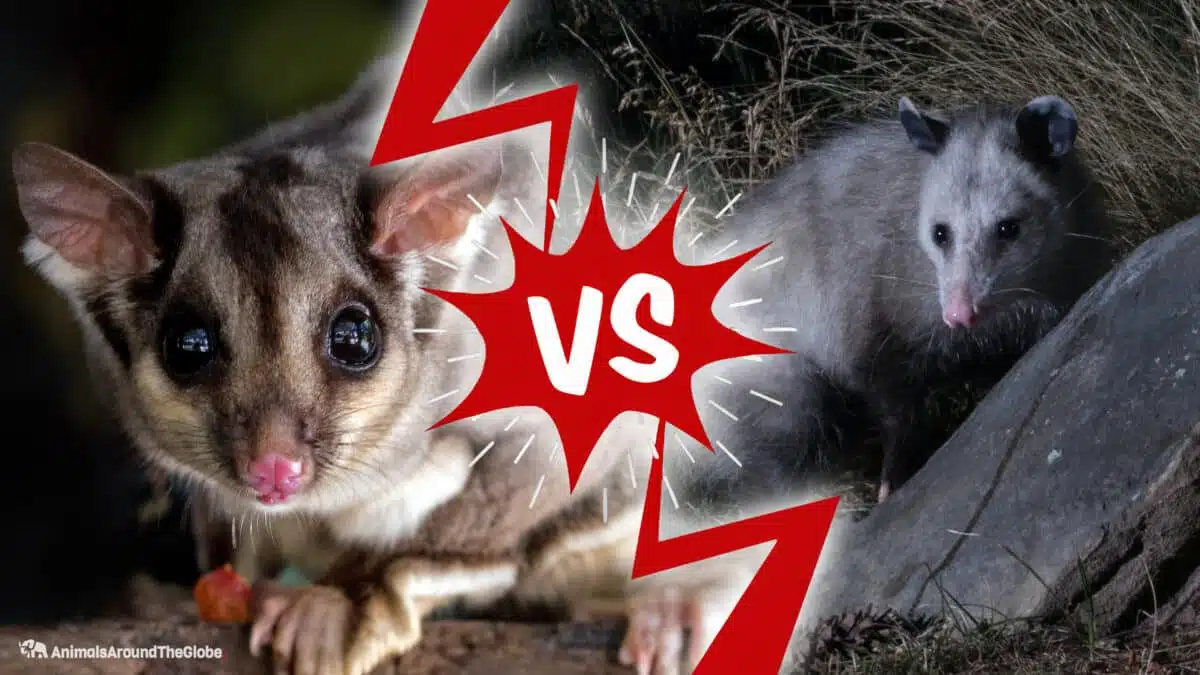In this article we will be comparing two species: Possum vs. Opossum – because yes, they are indeed two different species despite being so similar!

Was that fuzzy creature that darted across the road an opossum or a possum? What does the saying “playing possum” even mean? You’ve come to the proper place if you have inquiries about the differences between possums and opossums. To understand how to distinguish between them, continue reading.
Opossum
Opossum Scientific Name
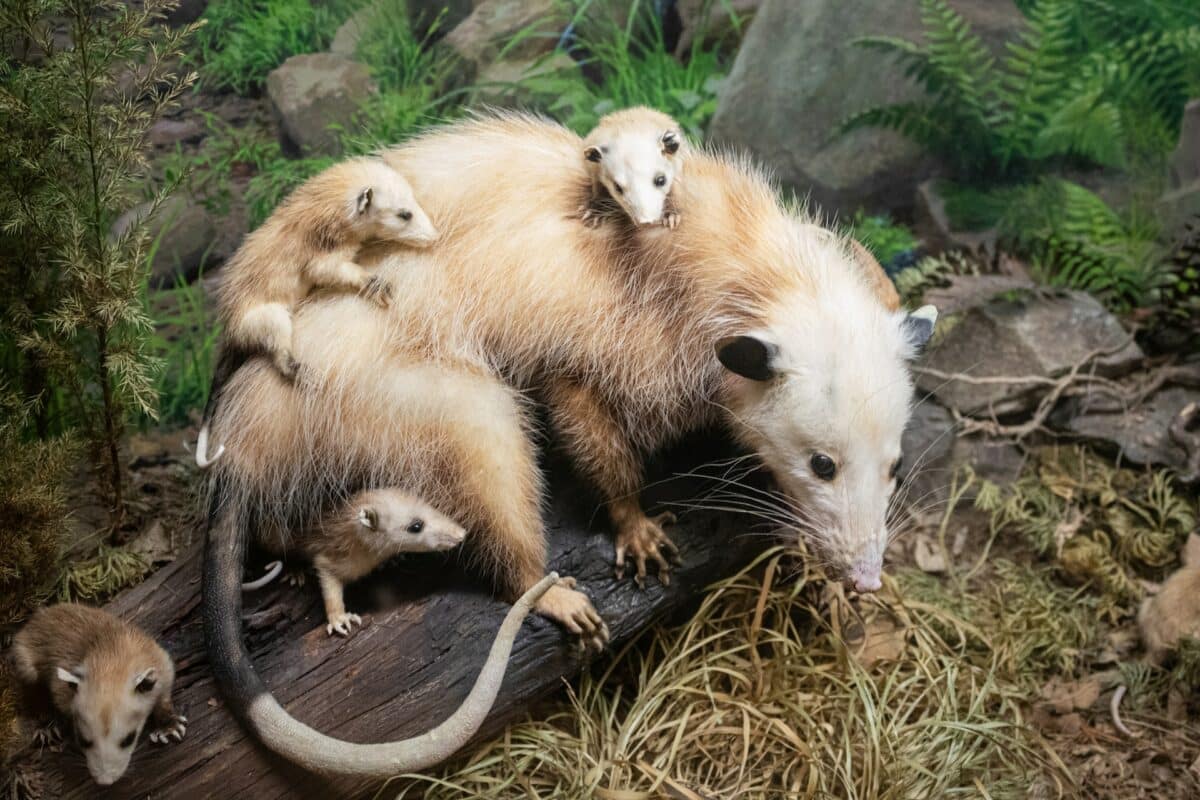
The Didelphidae family, which includes opossums, spans 19 different genera and more than 103 species.
The Didelphimorphia order, the biggest one in the Western Hemisphere, includes this mammal as one of its members. With “di” meaning “two” and “delphic” meaning “womb,” the term refers to the fact that these marsupials have two wombs: one in which newborns first grow and a pouch where they continue to develop.
Didelphis virginiana is the scientific name for the Virginia opossum, the only species found in the United States and Canada.
Between 1607 and 1611, the word “opossum” appeared for the first time in writing. It is thought to have been derived from the Proto-Algonquian term “apousoum,” which means “white dog or dog-like animal,” borrowed from the Powhatan tongue.
Opossum Appearance
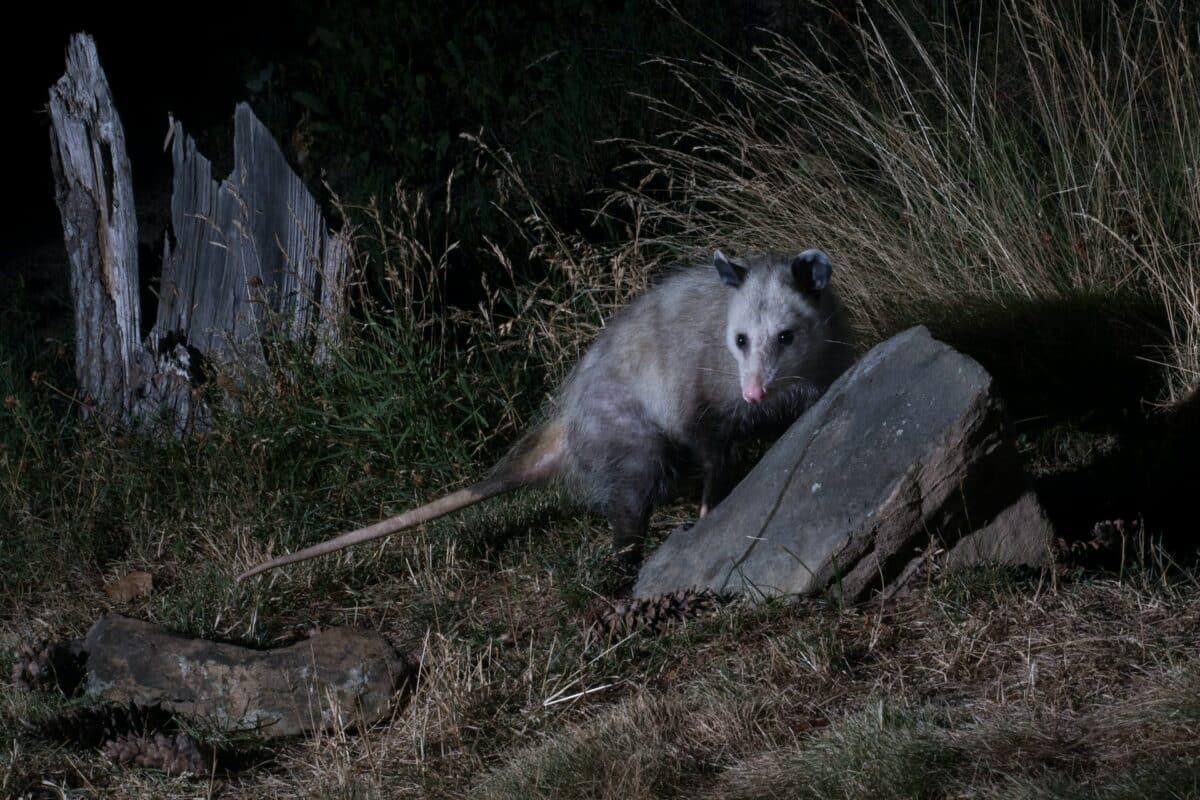
An adult opossum, a marsupial mammal species, is about the size of a house cat. Possums, as they are commonly called, are typically between 8.8 and 13.2 pounds in weight and around 2.5 feet long from snout to tail.
These creatures are typically gray in hue with white faces and have long, pointed nostrils. They have 50 teeth in their mouths, more than any other land animal in North America. They use four short limbs and specialized tails in several different ways.
The rat-like tails are referred to as prehensile because they can grasp objects. Opossums can climb trees, maintain their equilibrium, and hold onto nesting materials, all with the help of their tails.
Young animals are carried around by their mothers and utilize their prehensile tails to cling to them. Contrary to what many think, opossums do not hang upside down from trees like bats.
The opposable thumbs on these mammals’ hind legs make it even easier for them to grasp branches and other objects. Usually, males are bigger than females. Additionally, males typically weigh much more and have more prominent canine teeth.
Opossum Behavior
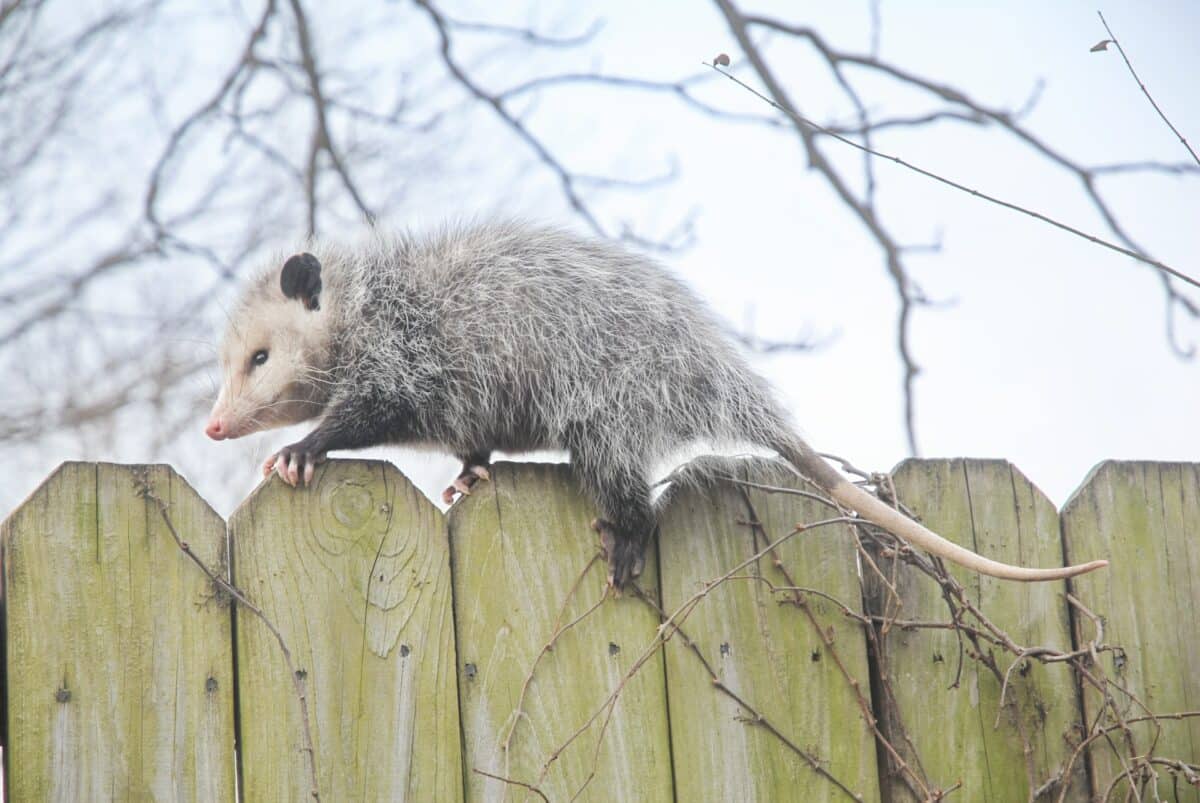
Opossums are animals that generally live alone and are nomadic. They have a characteristic gait that is limping and slow. These mammals are primarily active at night, searching for food and carrying out most of their other activities. Therefore their eyes are well adapted to the dark. Opossums typically don’t build their nests during the day, preferring to live in accessible crevices. Examples include deep within brush piles and tree holes, as well as underneath various man-made structures.
These marsupials frequently migrate in the warmer months. Usually, they follow the food wherever it leads them. Typically they remain in their more permanent nesting locations over the winter. They are not real hibernators, though, as they maintain moderate activity during the winter months.
When predators threaten these creatures, they pretend to be dead, which is one of their most well-known behavioral traits. The tactic, also called “playing possum,” is used as a last resort if the mammal’s early defenses against a threat—hissing, baring its teeth, and growling—fail to frighten the predator away.
The animal will become entirely limp and go into an almost catatonic state if a predator attacks it further. The marsupial may close its eyes or leave them vacantly staring into space when it is lying on its side. It might look remarkably dead when the creature extends its tongue.
Many people don’t realize that opossums also frequently urinate while acting dead and release a foul-smelling, green liquid from their anal glands. An animal can stay in this state for up to six hours; during that time, the animal’s respiration and heart rate will considerably slow.
They are adept at climbing trees and spend a lot of time in canopies while not being considered arboreal marsupials, which dwell in trees. They use their tails to aid them in climbing and moving around, and they have strong claws that are great for grabbing onto tree bark.
Amazingly, opossums can eliminate ticks and eat up to 5,000 of them in a season.
Opossum Habitat
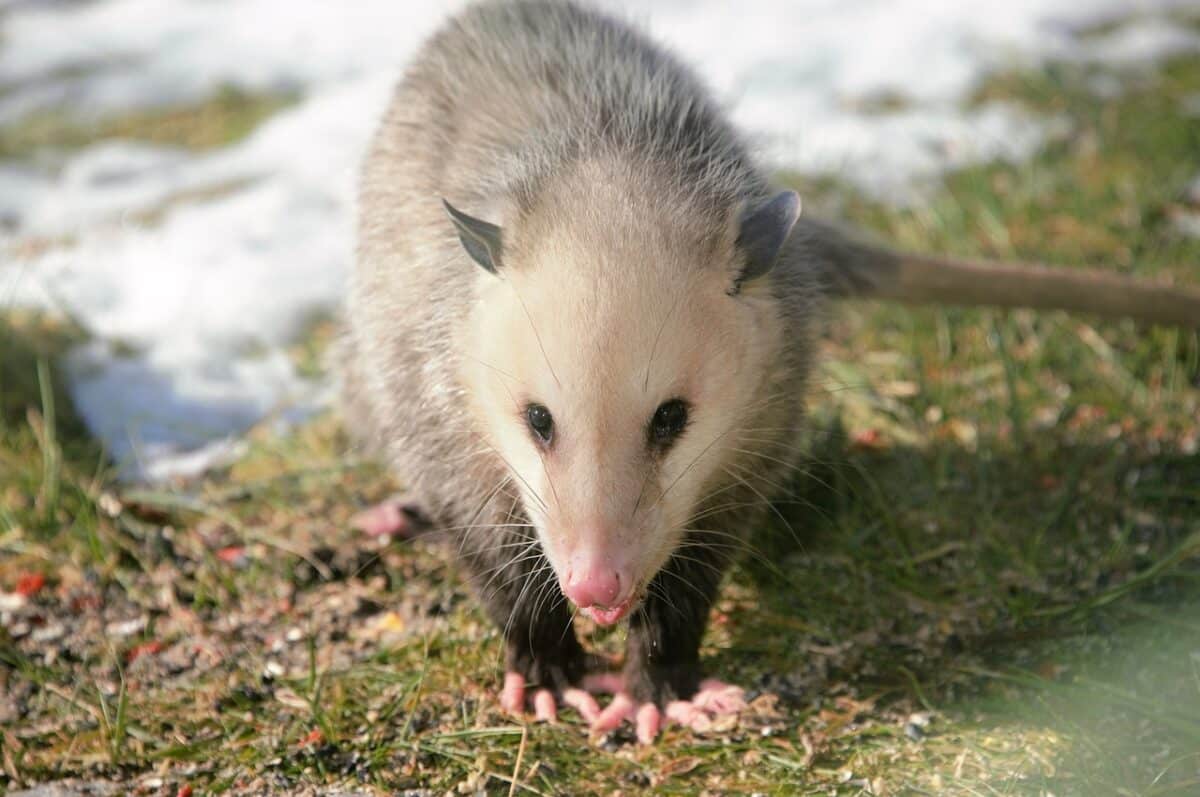
The Virginia opossum is the sole species of the opossum that may be found in North America. The habitat of this species reaches as far north as Canada and as south as Central America. Numerous other opossum species may be found further south.
Opossums in North, Central, and South America have evolved to survive by growing prehensile tails that enable them to grasp tree limbs. Their rear legs’ opposable thumbs also help in this way.
Opossums can endure various conditions due to the large area they call home.
Opossum Diet
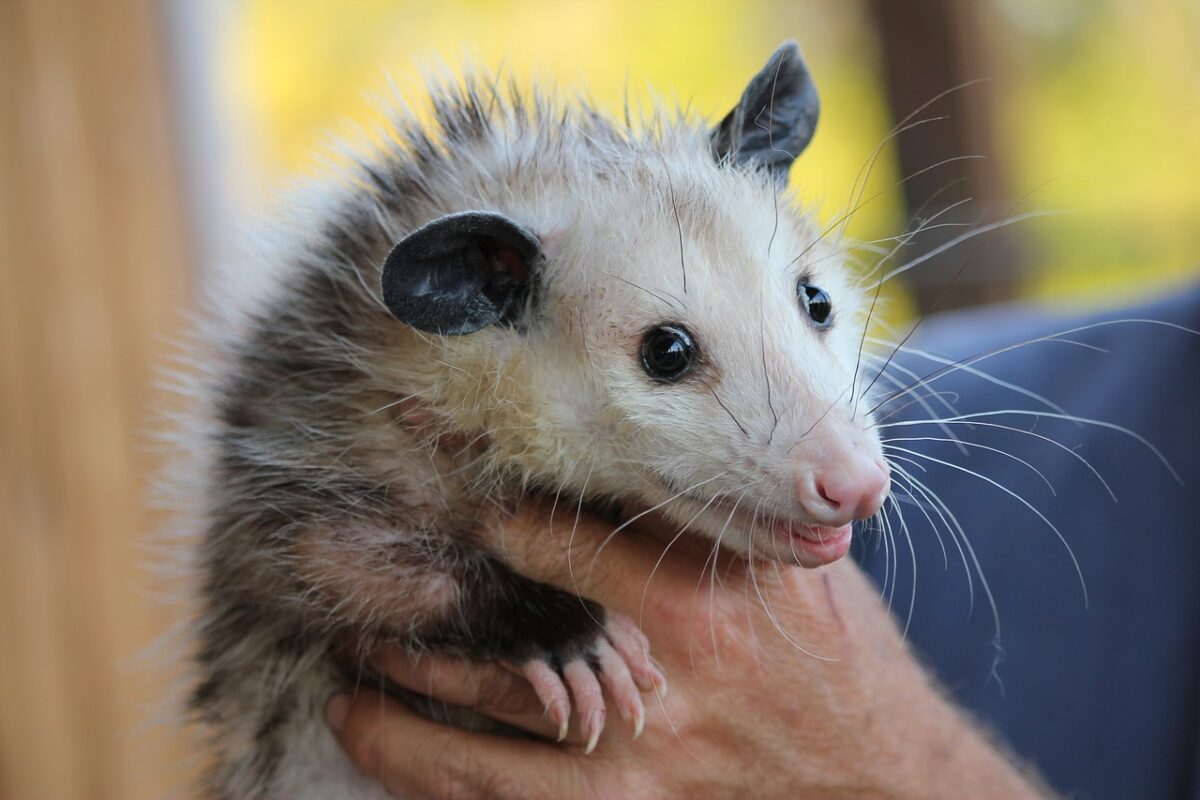
Opossums scavenge for food. Because they are omnivores, they may conveniently forage plant and animal components for food. They are known for stealing from people; they frequently enter dumpsters, trash cans, and other areas hunting for food.
Opossums are drawn to carrion (dead flesh). Therefore it’s common to see them eating roadkill. Other than that, opossums often eat fruit, grass, and different kinds of nuts in their diets.
Possum
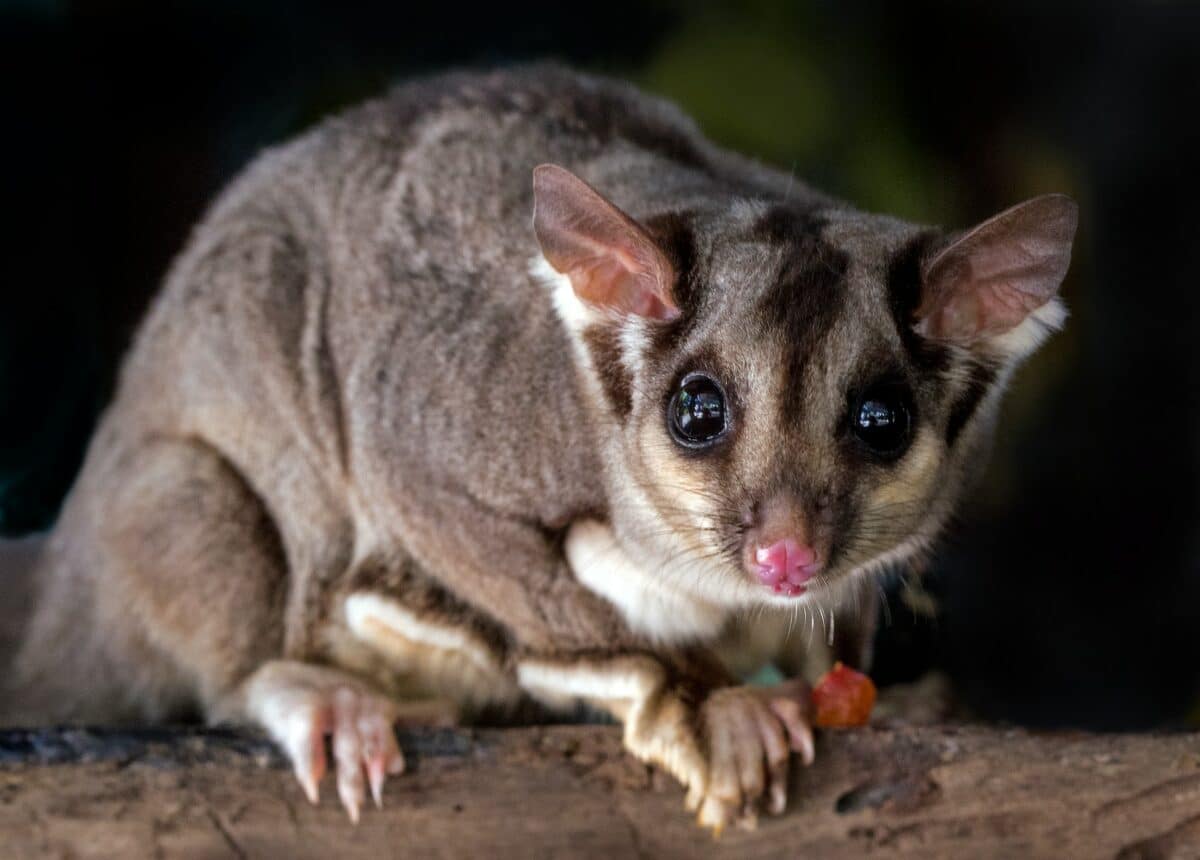
Possums are nocturnal creatures that can climb tall trees with fantastic agility and proficiency. Possums are sometimes observed or even heard scurrying around at night on roofs or decks where people live.
Although people often use “possums” and “opossums” interchangeably, they actually have distinct meanings. “Opossum” specifically describes the marsupials found in America. “Possum” is used for a group of Australian marsupials known scientifically as Phalangeriformes.
Possum Scientific Name
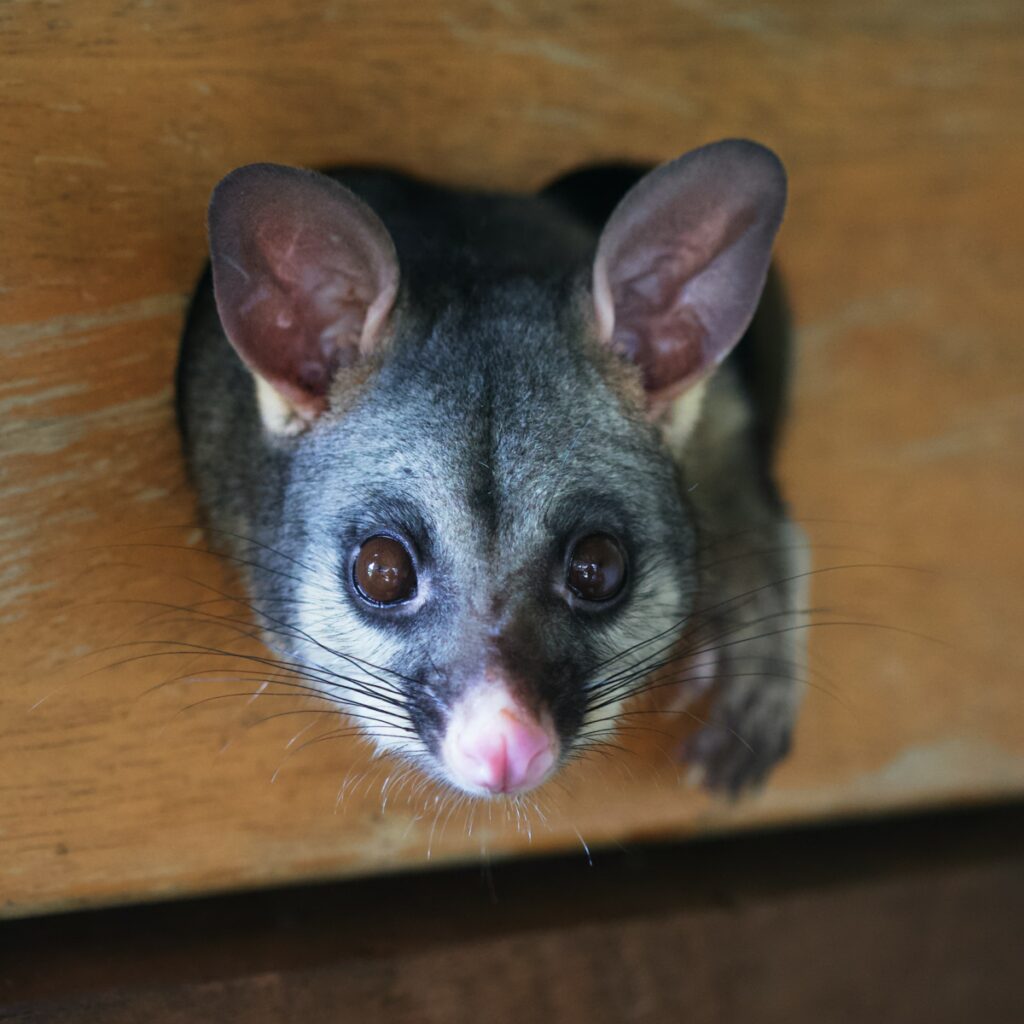
The possum’s scientific name, Phalangeriformes, refers to the fused fingers on its rear foot. It derives from the Greek word “phalanger,” meaning spider’s web. Possums are further classified into numerous families and genera as animals. Most possums, including the well-known common brush-tail possum and the cuscus, belong to the Phalangeridae family. The trioks, gliders, pygmy possums, and ring-tail possums are other varieties. Possums come in over 70 different species and can be found across the Pacific. They are members of the Diprotodontia marsupial order, together with kangaroos, wallabies, koalas, and wombats.
The glider is the possums’ most distinctive adaptation, though not the most unusual. These species can glide through the air thanks to the development of enormous skin flaps between their limbs, as the name suggests. These flaps resemble flying squirrels in many ways (which are rodents and placental mammals, not marsupials).
Two different creatures gaining similar features for the same reasons illustrate convergent evolution. The feather-tail glider has serrated toe pads for climbing smooth bark and has its genus, suitably named Acrobates, echoing their acrobatic skills.
Possum Appearance
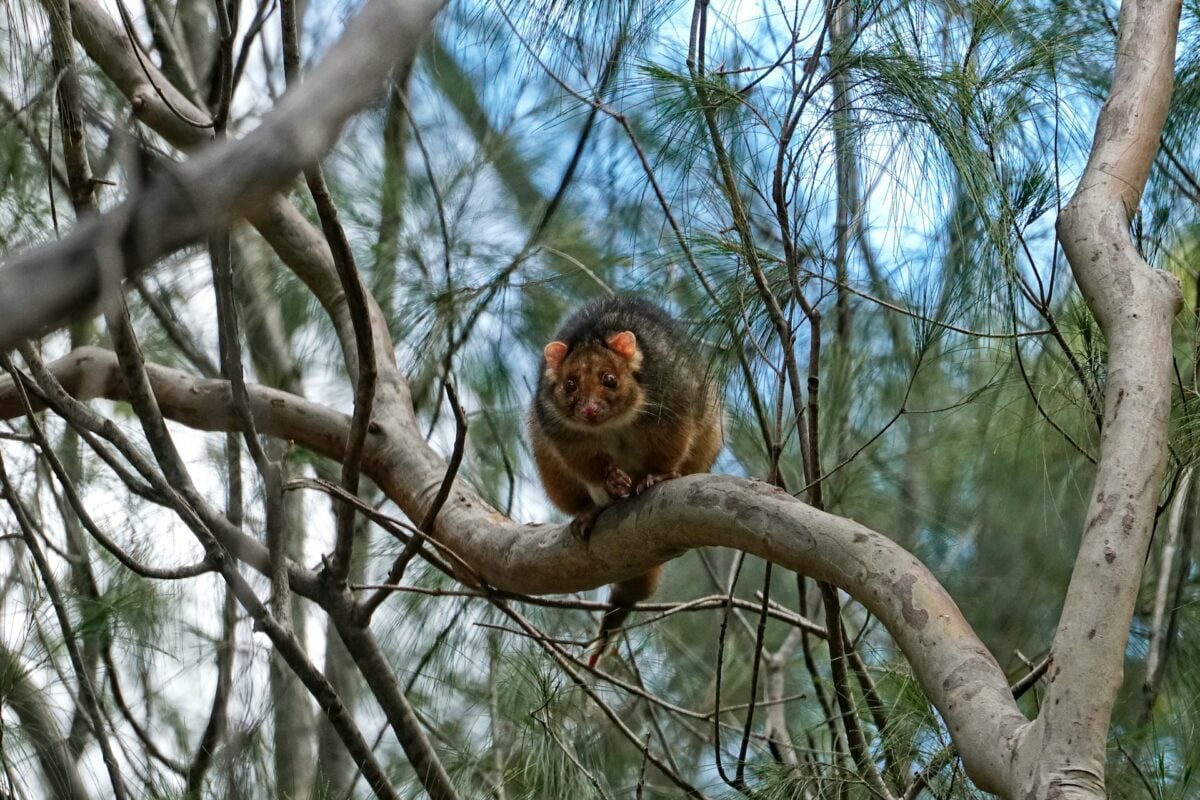
All possums typically share these characteristics. However, there is still a huge variety, especially in size.
The Tasmanian pygmy possum, less than 3 inches long and as slender as a pencil, is the smallest species. With its silky, thick fur and mostly hairless ears, it resembles mice more than its cousins.
The Talaud and Sulawesi bear cuscuses, which may weigh up to 22 pounds and resemble a domestic cat in size, are the two largest species of possum. They also have a hairless, prehensile tail. Their ears and fur are also shorter on these possums’ faces. Their fur typically has a deeper coloring, including shades of black, gray, and brown.
As animals, possums differ from one another in a variety of other ways. The underside of the tail of the brush-tail possum is entirely bare. Additionally, it has a prehensile tail that it can use to grasp bush and tree branches. It has pointed ears as well. Notably, the common brush-tail has smell glands on both sexes’ chests, which give the fur a scarlet tint.
The multicolored tail of the ring-tail possum contrasts this. The tail’s final quarter is usually finished with an intriguing trait: white fur. It almost seems like someone painted their tail white!
Possum Behavior
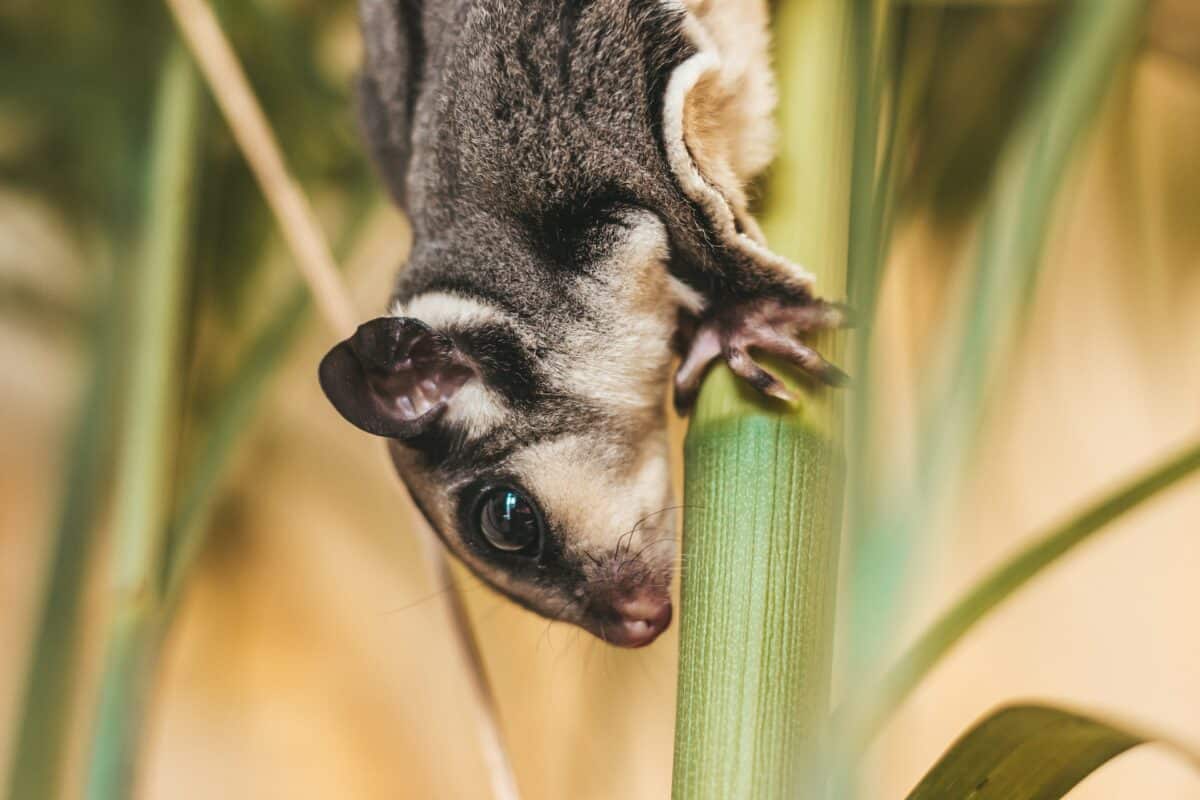
Possums are creatures that exhibit a wide range of physical traits and behaviors. Only during the breeding season do the nocturnal, solitary brush-tail possums congregate. They can dwell close to homes and gardens since they are the most terrestrial and grounded of all possum species.
On the other hand, ring-tail possums are highly gregarious animals that live in groups called dreys. These groupings typically include the breeding male and female pair and their progeny.
The gliders mentioned above can glide between tree branches and the ground below thanks to flaps between their limbs, including the well-known squirrel glider and sugar glider. It has been noted that one species can fly 65 feet at once.
These species are generally peaceful, omnivorous creatures who only exhibit violent behavior when disturbed. They may act defensively by acting helpless, growling, baring their teeth, or smelling offensive.
Possums spend most of their time sleeping or grooming when they aren’t out hunting. Possums communicate using smell and sound. They screech, hiss, click, grunt, and howl as calls.
To mark their territory, they also have smell glands on their chest. They are significantly different from rodents because they are marsupials.
Possum Habitat
The woods of Australia and the nearby islands of Tasmania, New Guinea, Celebes, and the Solomon Islands are home to the possum. Their most frequent habitats include urban areas, eucalyptus forests, woodlands, and coastal shrub-lands.
They require a somewhat extensive network of trees to live in for security and food.
Possum Diet
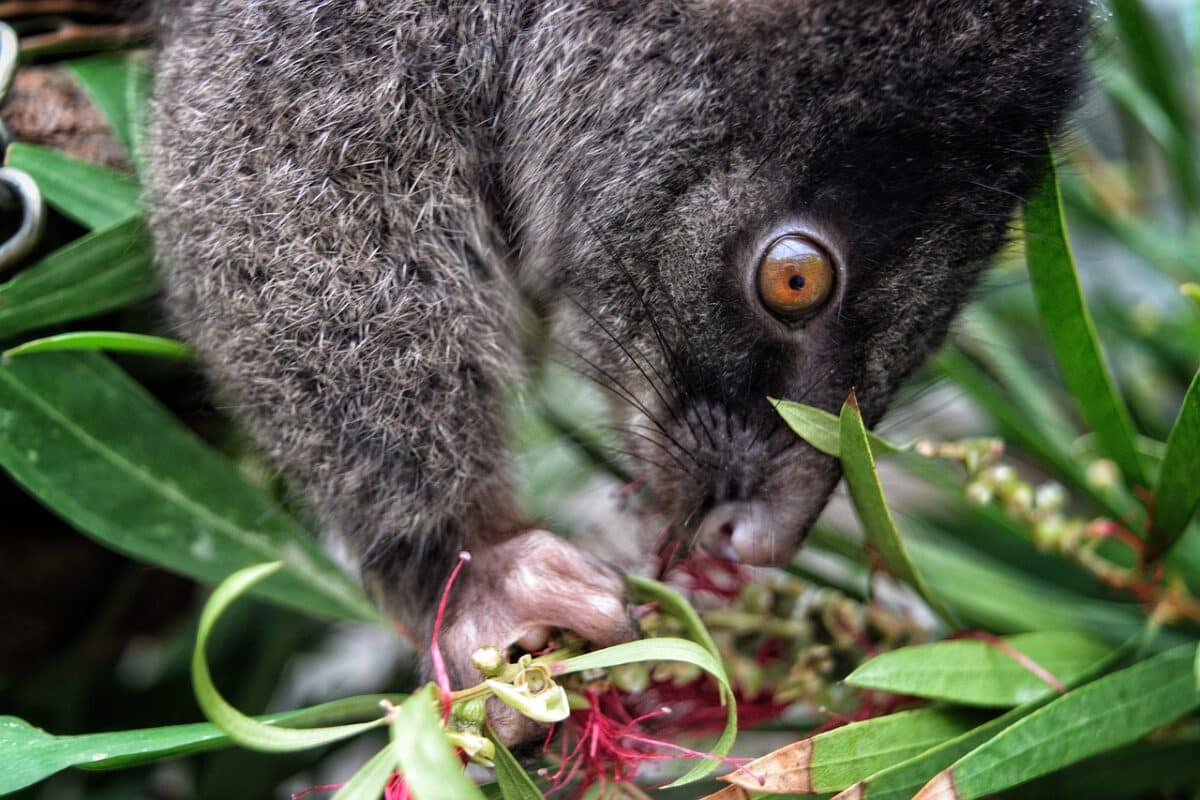
An omnivore diet that includes insects, eggs, and plant matter; even some that may harm other animals, has developed to be preferred by possums. They also gladly scavenge food that humans and other animals have left over if given a chance.
The specific nutritional makeup varies based on food availability in each location. Thus it is best to think of Possums as opportunistic feeders. Certain possum species have an enlarged cecum (a pouch in the intestines) to ferment and digest their diet of fiber-rich foods.
Their sharp molar teeth can chew efficiently through rigid plant material. Possums also consume other types of food, including chickens and other small animals.
Possum vs. Opossum
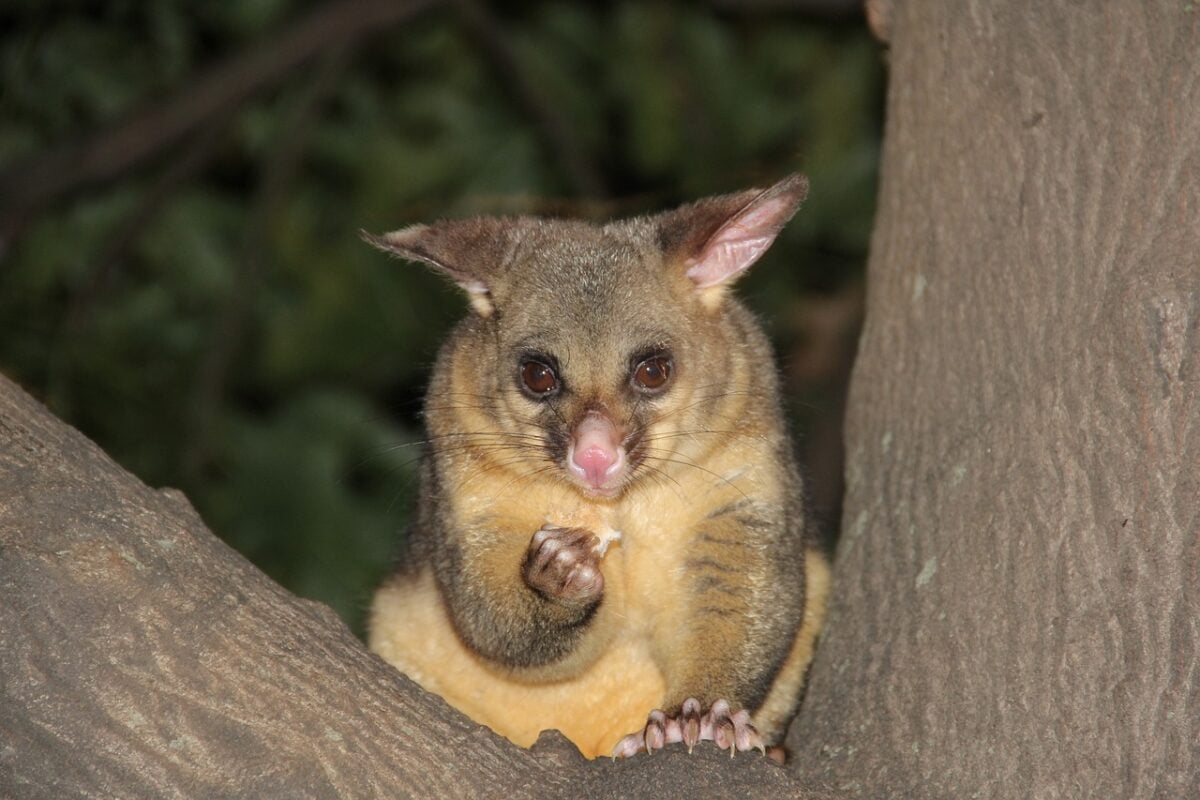
How can you distinguish between an opossum and a possum? They both have a fleshy pouch where they carry their young because they are marsupial mammals. As nocturnal animals, they are both most active at night.
The location of the animal’s home is the most apparent difference. If you saw it in the wild in North America, it would be an opossum, a Virginia opossum. Call it a plain old possum if it’s in or near Australia.
Next, compare the opossum’s tail to the possum’s tail. The tail of opossums is scaly and almost entirely hairless. Possums resemble squirrels in having bushy tails.
Additionally, you can see what the possum or opossum is consuming. Possums in Australia are herbivores. Opossums in America are omnivores or scavengers. They’ll consume fruit, insects, rubbish, and carrion, among other things (meat). Opossums enjoy eating outdoor-leftover cat or dog food.
How do opossums and possums respond to fear? Opossums in North America exhibit two very different defensive strategies. They will first hiss angrily at the alleged aggressor. If this aggressive act doesn’t deter potential observers, the opossum will “play possum” or pretend to be dead.
If they believe the animal is dead, certain predators will leave it alone. However, the opossum doesn’t fall asleep; instead, it enters a catatonic state. This is an automatic reaction rather than a voluntary one.
Possum vs. Opossum: 4 Key Differences
Please be advised that Didelphis virginiana is the only species of opossum found in North America. Similar in appearance is the common opossum, Didelphis marsupialis, which resides throughout South America. The Phalangeriformes, also known as Australasian possums, includes roughly 70 species. Among the most well-known is the common ring-tail possum.
You may wonder why Opossums frequently are referred to as Possums?
The species found in North America is called an “opossum.” It is believed to have originated from the Native American word apousoum, which means “a white dog-like animal” and first occurs in written records from the 1600s.
Opossums first appeared in print around 1610. Since 1613, the abbreviation “possum” has been in use. Since then, many people have continued to pronounce the term “possum” without the initial “o.”
When English explorers who had seen the opossum arrived in Australia, they saw creatures that looked identical to them. Sir Joseph Banks, a naturalist, referred to them as “possums,” pronouncing the word as he had come to do in North America. More confusion is added by the fact that Australians occasionally refer to their variety as “opossum”!
Possum vs. Opossum: Geographic Distribution
Opossums from Virginia dwell in North America. Observations of them have been made from Canada to Costa Rica. The only marsupial species found north of Mexico is this one.
Possums, on the other hand, are indigenous to Oceania, consisting of several smaller Pacific Islands and Australia, New Zealand, and New Guinea.
Possum vs. Opossum: Tail Type
In opossum vs. possum, the opossum has a long, primarily hairless tail that may appear scaly. The animal resembles a giant rat thanks to its tail.
Possums in Australia have fluffy tails that resemble squirrels.
The name of one of the most prevalent possum species, the brushtail possum, emphasizes this intriguing trait by referring to the thick and bushy tail of the animal. They usually give live birth to one young at a time rather than carrying an entire litter like dogs or cats do, and they also have pointed snouts.
Possum vs. Opossum: Diet
What food does the animal consume? Possums in Australia are plant-only eaters, i.e, herbivores. On the other hand, opossums are both omnivorous and scavengers. Almost anything, including both vegetables and meat, will be consumed by them. The opossum frequently consumes carnivorous foods like insects, tiny reptiles, pet food, human waste, and animal carcasses.
Possum vs. Opossum: Defense Mechanisms
Regarding opossum vs. possum defense methods, North American opossums may hiss loudly and display their teeth if they feel threatened. They are renowned for “playing possum” as well. Opossums are not faking their sleep, despite the common term “faking sleep” being used to describe it. They may experience catatonia, an uncontrollable inactivity condition when feeling threatened. This is done to deter predators from pursuing live prey. It won’t take the opossum long to revive from this unconscious state.
Australian possums are highly territorial, marking their area with urine and oil from their anal, chin, and chest glands. Other than that, they are timid animals who would protect themselves by staring down other possums and holding their ears up.
The Final Say:
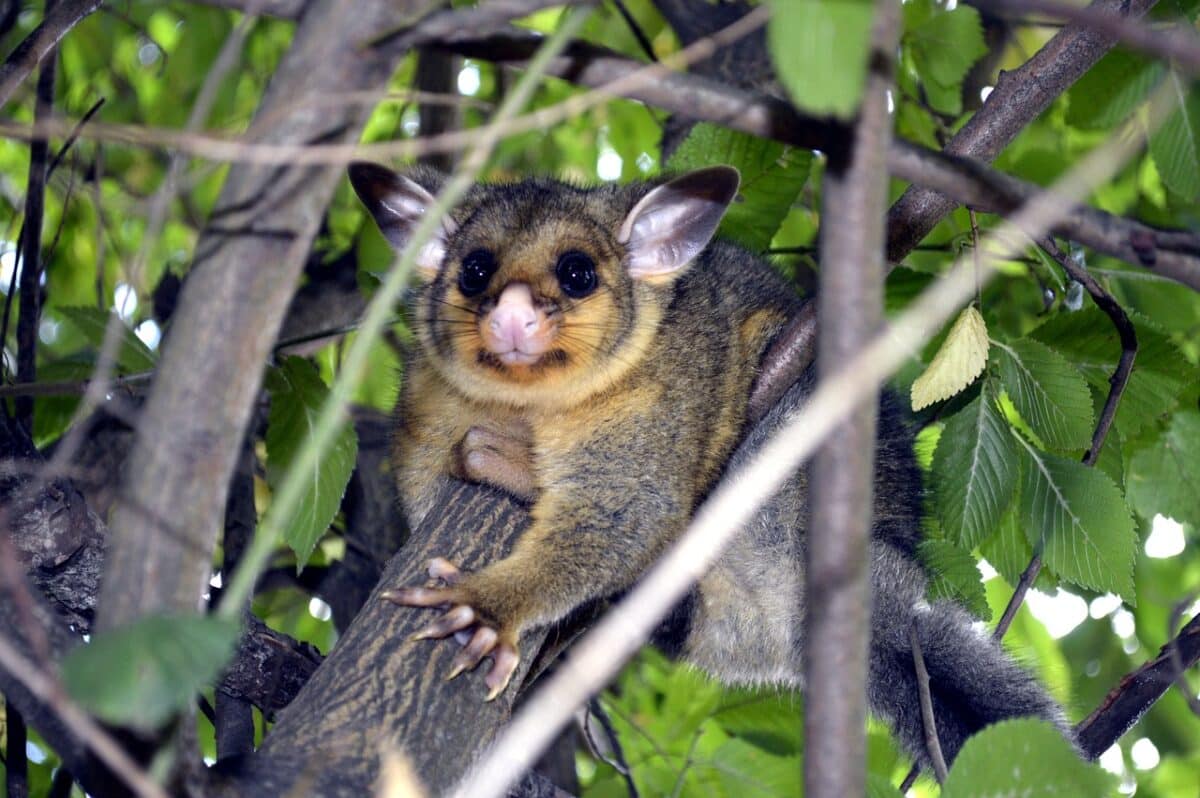
| Key Points |
| Possums are native to Australia and Oceania, while opossums live in North America. |
| Didelphis virginiana is the scientific name for the Virginia opossum, the sole species found in the United States and Canada. The possum’s scientific name, Phalangeriformes, refers to the fused fingers on its rear foot |
| Possums are best described as opportunistic because the precise nutritional composition fluctuates depending on the food supply in each place. Opossums are drawn to carrion (dead flesh) |
| In opossum vs possum, the opossum has a long, mostly hairless tail that may appear scaly. The animal resembles a very huge rat thanks to its tail. |
| In opossum vs possum, the opossum has a long, mostly hairless tail that may appear scaly. The animal resembles a very huge rat thanks to its tail. Possums in Australia have fluffy tails that resemble squirrels. |
| Opossums and Possums also exhibit unusual protective techniques such as hissing and acting lifeless. |
Possums are native to Australia and Oceania, while opossums live in North America. Opossums have rat-like tails and are omnivorous scavengers. Possums have bushy, squirrel-like tails and live in trees. Opossums also exhibit unusual protective techniques, such as hissing and acting lifeless.
Thank you for reading our comparison of the Possum vs. Opossum! For a similar comparison between two species, head over to our article on the Bison vs. Buffalo.
- Magpie Bird Is Reunited with Her Dog Best Friend - April 24, 2024
- Dog Saves Another Dog From Drowning in Fish Pond - April 23, 2024
- Man On Motorbike Rescues Cat From Highway - April 23, 2024

